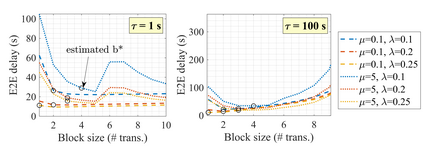Due to the increasing interest in blockchain technology for fostering secure, auditable, decentralized applications, a set of challenges associated with this technology need to be addressed. In this letter, we focus on the delay associated with Proof-of-Work (PoW)-based blockchain networks, whereby participants validate the new information to be appended to a distributed ledger via consensus to confirm transactions. We propose a novel end-to-end latency model based on batch-service queuing theory that characterizes timers and forks for the first time. Furthermore, we derive an estimation of optimum block size analytically. Endorsed by simulation results, we show that the optimal block size approximation is a consistent method that leads to close-to-optimal performance by significantly reducing the overheads associated with blockchain applications.
翻译:由于对促进安全、可审计和分散应用的连锁技术的兴趣日益浓厚,需要应对与这一技术有关的一系列挑战。在本信,我们侧重于与基于工作证明(PoW)的连锁网络有关的延迟,即参与者通过协商一致确认交易,将新信息附在分配分类账中,从而确认交易。我们基于批量服务排队理论提出了一个新的端到端的延绳模型,首次将时间器和叉子特征化。此外,我们从分析角度得出对最佳区块规模的估计。我们得到模拟结果的认可,我们表明最佳区块规模近似是一个一致的方法,通过大幅降低与区链应用程序相关的间接费用,导致接近最佳业绩。










